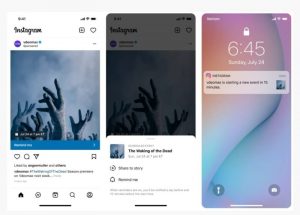As a kid, I loved to bounce around, especially in bouncy castles. Unfortunately, my love for bouncing has changed since I have gotten into marketing, especially when working on websites and discussing website bounce rates. Bounce rates have become the enemy – and I no longer have a desire to enter a bouncy castle (most days).

But I digress.
Bounce rate is a term that gets thrown around a lot in marketing circles. Most of us have a general idea of what it means and that a high bounce rate is not good. But do you really know how your bounce rate impacts your marketing efforts?
If you are ready to put a little more bounce in your step and eliminate the bounce in your website, the following will help you learn how to reduce your bounce rate and transform your website from a trampoline, into a net that catches, engages, and keeps users on your website.
Let’s start with a proper definition of website bounce rates.
Bounce Rate Defined

Bounce rate is simply the number of website visitors who leave without visiting any other webpages on your site. They are one and done. They view the page they landed on and leave, making a high bounce rate potentially crippling.
So, what should my website bounce rate goals be? As a general rule, a bounce rate of 50% is considered the average, and if your bounce rate increases, it should be a cause for concern requiring further analysis.
Google defines bounce rate as:
“The percentage of single-page sessions (i.e., sessions in which the person left your site from the entrance page without interacting with the page).”
There is a distinction between bounce rate and exit rate. Google explains the difference:

- For all page views to the page, Exit Rate is the percentage that were the last in the session.
- For all sessions that start with the page, Bounce Rate is the percentage that were the only one of the session.
- Bounce Rate for a page is based only on sessions that start with that page.
Types of Bounce Rate
There are four main actions that users take once they land on one of your webpages that constitutes as a bounce:
- The user clicks the back button
- The user closes the web browser
- The user types a new URL
- The user chooses to do nothing and the page times out
Each one of these actions signals to you that something is wrong and you did not meet the expectations of the user and there’s work to be done to improve the page.
What Does a High Bounce Rate Mean?
A high bounce rate is indicative of an issue with your webpage. Your bounce rate analytics will provide insight into the specific issues, but it generally falls into one of these categories:
- You are attracting the wrong type of traffic
- Your website does not meet users’ expectations
- Your webpage has navigation issues
- Your webpage has design issues
- Your web content and CTA need some work
6 Things to Clarify About Bounce Rate
#1 – A high bounce rate is a bad sign: This may seem obvious, but a high bounce rate is bad, and it can impact your webpage in a number of ways, including reduced engagement and a drop in ranking.
#2 – It’s a rankings factor: Yes, the bounce rate is a rankings factor. Bounce rate analytics is a factor used by Google to determine a page’s place, so it’s important to pay attention.
#3 – Bounce rates can be subjective: There are general principles that can cause a high bounce rate, but there are individual factors on your site that play a role as well. Look at specific issues that are related directly to your website and market goals.
#4 – Some bounce is expected: Eliminating all bounce is just not feasible. Some bounce rate should be expected, no matter how well you optimize a page.
#5 – Reducing your bounce rate is unique to your website: There is no perfect set of steps to reduce your website bounce rate; rather, it’s site specific, and you need to assess each one of your web pages on a case by case basis.
#6 – A high bounce rate on some pages is acceptable: There are some pages where a high bounce rate is acceptable such as contact pages, customer support, and blog articles. But this doesn’t mean you can’t work on these pages to keep more users on your site.
Bounce Rate Analytics – What the Numbers Mean
Now let’s get to the question you want answered: What is a good bounce rate?
In general:

However, an acceptable bounce rate depends on many variables including:
- Industry
- Brand presence and credibility
- The type of webpage
- The type of website
- A visitor’s intent (are they seeking information, looking to buy, etc.)
- Web design
- Your sales process
- Your relationship with the user
This means that depending on your industry and the type of page, a reasonable bounce rate could be 40% or it could be 80%.
Kissmetrics provides some standards for bounce rate analytics by industry:

Neil Patel’s infographic provides Google Analytics’ benchmark for bounce rates:

How to Reduce Bounce Rate
The first thing you need to do is set realistic expectations based on industry averages and your site’s track record.
- Deliver: Failing to deliver on expectations will immediately turn off users and result in them leaving your website. You don’t want users to land on a page and feel duped. “A high bounce rate may be an indication that your content isn’t engaging or that your advertisements are misleading. In order to reduce bounce rate, it’s important to set up users’ expectations through the content — whether that be the call-to-action in an ad or headlines that match blog content,” Jason Squardo of ZOG Digital says to Mashable.
- Improve overall website usability: If your website is not easy to use, people will get frustrated and leave. You can enhance usability and reduce bounce rates by:
- Decluttering and having an appropriate amount of whitespace
- Organizing page elements in a logical way
- Using color to create contrast and lead users
- Using bullet lists, headlines, and larger font to make text readable and guide users to the desired next step (i.e., sign up, comment, make a purchase, read another page).
- Decluttering and having an appropriate amount of whitespace
- Use social media to attract traffic: “Use social media content to engage people, and keep them informed and entertained. But when you really need to reach them — use email and social media. This way, you can get your content out to people without having to rely on them coming to your site of their own volition, and probably ‘bouncing’ off,” says Morra Aarons-Mele, founder of the digital cause marketing agency Women Online to Mashable.
- Get your web design right: First impressions matter and 94% of first impressions online are design related. If your web design is not up to par, you could leave a negative first impression on website visitors. You can lower your bounce rate by:
- Having a clear call to action on landing pages
- Having clear and intuitive navigation
- Have easy to read (and scan) content
- Make sure your website is mobile friendly
- Invest in quality design, graphics and imagery
- Having a clear call to action on landing pages
- Speed up page load times: No one wants to wait for anything anymore, and they certainly won’t wait for you webpage to load. If you page doesn’t load immediately, you can almost certainly expect a higher bounce rate on that particular page. Patel recommends:
- Use little or no self-loading multimedia content
- Set external links to open in new browser windows/tabs
- Don’t let ads distract from your content: place static ads to sides, and avoid pop-ups and self-loading multimedia ads
- Use little or no self-loading multimedia content
- Attract the right people to your website: Who you attract to your website will have an impact on whether or not they stick around. It’s important to make sure your ads, marketing, and social media messages are targeted to the right user groups. You can attract the right visitors by:
- Using multiple landing pages to attract different user groups
- Refine your meta title and description tags
- Choose the right keywords
- Improve the targeting of your online ads
- Re-assess how you drive traffic to your website
- Using multiple landing pages to attract different user groups
Final Thoughts
If you want to reduce your bounce rate, you need to give website visitors a reason to stick around. For some, this means great content; and for others, this might mean an enticing promotion or sales pitch. It’s up to you to figure out what your users want and how to attract the right people to your site. This will help your improve your website bounce rate and make your website more sticky.
(233)





